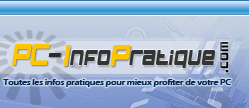Re: Aide pour migré de Fedora 10 pour Seven.
 le 14 Nov 2009 15:17
le 14 Nov 2009 15:17
Comme je suis un peu têtu, j'ai téléchargé le mode d'emploi de ta bécane (en anglais).
Je te mets ici un petit extrait édifiant :
The Boot Order page displays a general list of the bootable devices that may
be installed in your computer, including but not limited to the following:
• Diskette Drive
• Internal HDD
• USB Storage Device
• CD/DVD/CD-RW drive
• Modular bay HDD
NOTE: Only devices that are preceded by a number are bootable.
During the boot routine, the computer starts at the top of the list and scans
each enabled device for the operating system start-up files. When the
computer finds the files, it stops searching and starts the operating system.
To control the boot devices, select (highlight) a device by pressing the down-
arrow or up-arrow key, and then enable or disable the device or change its
order in the list.
• To enable or disable a device, highlight the item and press the space bar.
Enabled items are preceded by a number; disabled items are not preceded
by a number.
• To reorder a device in the list, highlight the device and press <u> to move
the device up the list or <d> to move a device down the list.
Boot sequence changes take effect as soon as you save the changes and exit
the system setup program.
Performing a One-Time Boot
You can set a one-time-only boot sequence without entering the system setup
program (you can also use this procedure to boot the Dell Diagnostics on the
diagnostics utility partition on your hard drive).
1 Shut down the computer through the Start menu.
2 Connect the computer to an electrical outlet.
3 Turn on the computer. When the DELL logo appears, press <F12>
immediately.
If you wait too long and the Windows logo appears, continue to wait until
you see the Windows desktop, then shut down your computer and try again.
4 When the boot device list appears, highlight the device from which you
want to boot and press <Enter>.
The computer boots to the selected device.
The next time you reboot the computer, the previous boot order is restored.
Pour résumer, il existe deux méthodes pour modifier l'ordre de boot :
- Une "permanente", accessible en appuyant sur la touche "F2".
Tu modifies l'ordre de démarrage en sélectionnant le périphérique (flèches haut-bas), en l'activant ou en le désactivant (touche Espace) et en le déplaçant dans la liste (touches u et d).
Tu peux ainsi supprimer la recherche sur le lecteur de disquette, placer le lecteur CD avant le disque dur, etc. Cette modification, une fois validée, sera permanente (à chaque boot).
- L'autre "occasionnelle", accessible avec la touche "F12".
Tu modifies l'ordre en sélectionnant juste le périphérique que tu veux faire démarrer en premier. Cette modification n'est valable que pour le démarrage en cours. L'ordre normal sera rétabli ensuite.










